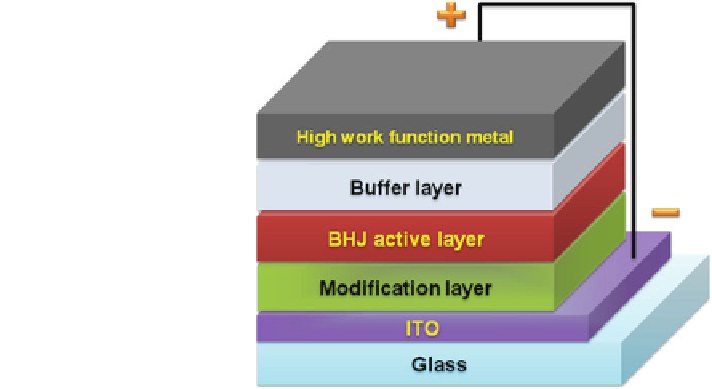Environmental Engineering Reference
In-Depth Information
6.4.2 Device Structures
6.4.2.1 Normal Structure
In normal structure, interface engineering can be concluded to improve the
interface stability as discussed in
Sect. 6.4.1
.
6.4.2.2 Inverted Structure
A typical normal structure of OPV device is ITO/PEDOT:PSS/photoactive layer/
LWF metal. LWF metal as cathode is a primary limit to the interface stability of
devices since LWF metals (Li, Ca, and Al) are prone to be oxidized, resulting in
the increase of series resistance at the organic/electrode interface and degrading
device performance. In addition, oxygen preferably diffuses into the photoactive
layer through pinholes and grain boundaries through the cathode, degrading the
active layer and making the device instable in air [
4
]. On the other hand, the ITO/
PEDOT:PSS interface is also instable due to likely indium diffusion into the
photoactive layer and the ITO etching by acidic PEDOT:PSS adsorbing water [
6
,
51
]. The reaction between PSS and water induces a faster degradation of the ITO/
PEDOT:PSS interface [
6
].
To overcome the instability issue in normal structure device, one feasible
approach is to construct an inverted configuration [
73
], where ITO serves as the
cathode and a high work-function (HWF) metal as the anode, as shown in
Fig.
6.13
. It should be pointed out that only modified ITO can serve as the cathode
for electron extraction. The functional layers for modifying ITO mainly focus on
metal oxides such as TiO
2
[
74
] and ZnO [
75
,
76
], and alkali-metal compound like
Fig. 6.13 A typical inverted
device structure

Search WWH ::

Custom Search